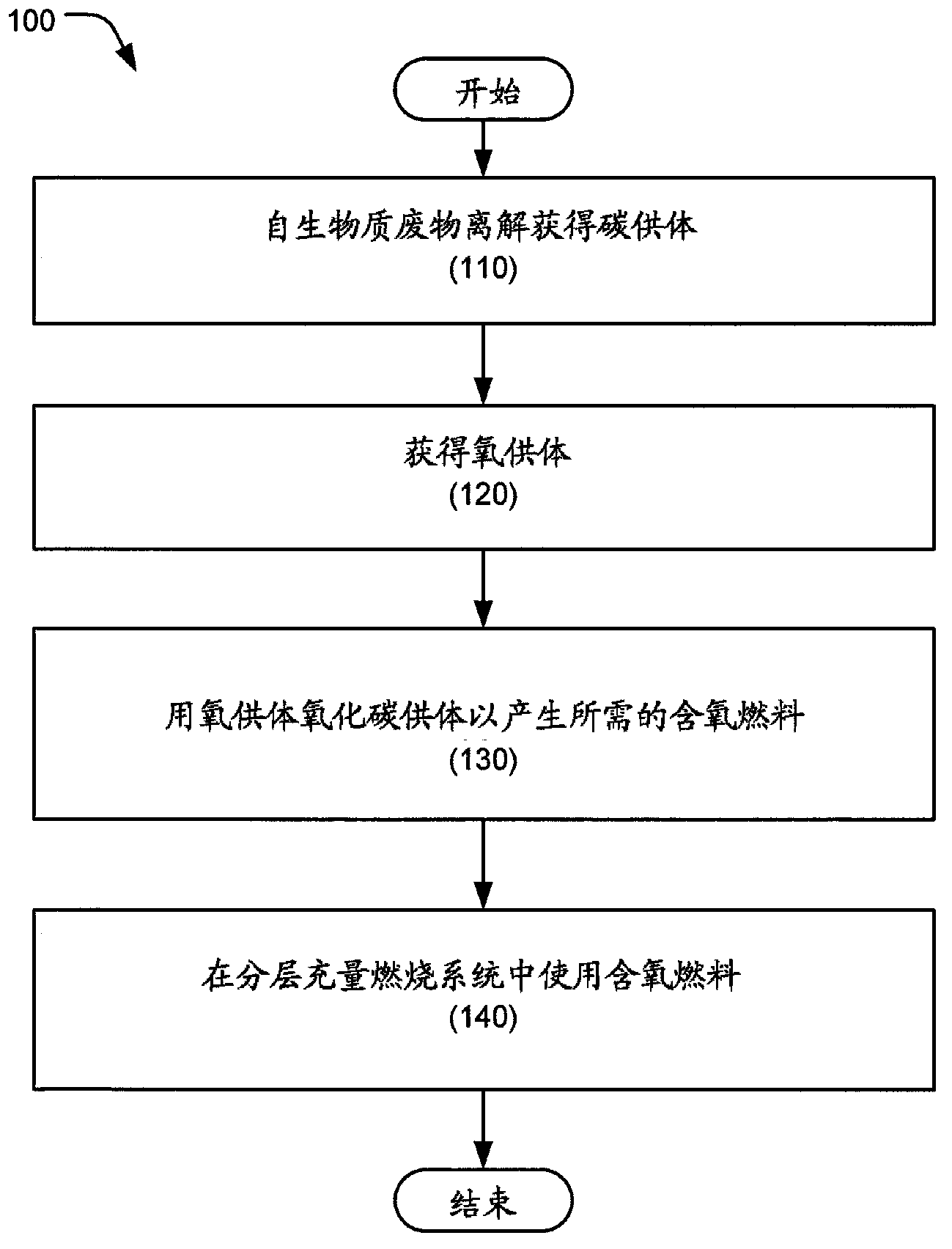Oxygenated fuel
An oxygen-containing fuel and carbon oxidation technology, applied in the direction of liquid carbon-containing fuel, waste fuel, biofuel, etc., can solve the problem of large additional costs of catalytic reactors, achieve the effect of eliminating carbon dioxide and hydrocarbon emissions, and improving fuel efficiency
- Summary
- Abstract
- Description
- Claims
- Application Information
AI Technical Summary
Problems solved by technology
Method used
Image
Examples
Embodiment Construction
[0026] Ignition delay for conventional diesel fuel made from a mixture of large molecules as liquid fuel components includes the time to vaporize and crack these molecules and then penetrate enough additional hot air to ignite. Small gaseous molecules such as hydrogen (H 2 ) and carbon monoxide (CO) delays are much shorter and eliminate particle formation. The time to complete combustion of any fuel is related to the heat required to vaporize and crack the fuel, the availability of oxidant, the heat released by combustion, and the degree to which the heat release is conserved. To equalize kinetic energy in a population of mixed molecules, small molecules have much higher velocities than large molecules. At the same temperature, small molecules such as hydrogen travel faster, traverse greater distances, collide more frequently, and diffuse faster than larger molecules. Hydrogen burns over a much wider range of air-fuel ratios than most hydrocarbons. This, combined with the h...
PUM
 Login to View More
Login to View More Abstract
Description
Claims
Application Information
 Login to View More
Login to View More - Generate Ideas
- Intellectual Property
- Life Sciences
- Materials
- Tech Scout
- Unparalleled Data Quality
- Higher Quality Content
- 60% Fewer Hallucinations
Browse by: Latest US Patents, China's latest patents, Technical Efficacy Thesaurus, Application Domain, Technology Topic, Popular Technical Reports.
© 2025 PatSnap. All rights reserved.Legal|Privacy policy|Modern Slavery Act Transparency Statement|Sitemap|About US| Contact US: help@patsnap.com



